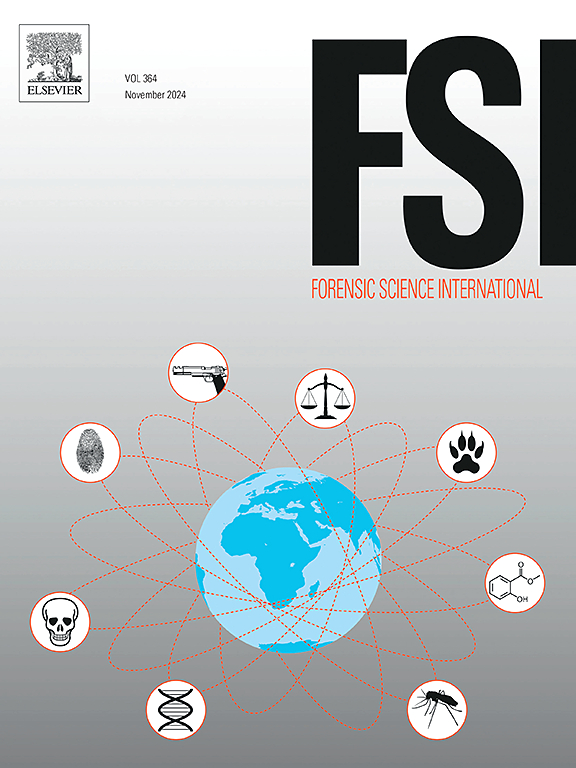3D dental similarity quantification in forensic odontology identification
IF 2.2
3区 医学
Q1 MEDICINE, LEGAL
引用次数: 0
Abstract
Forensic odontology identification largely depends on comparing dental work like fillings and crowns with the dental records of potential victims. This process can be challenging, especially regarding victims with minimal or no dental work. Alternatively, 3D tooth morphology can be used for identification by automated dental surface similarity scoring. However, high-resolution 3D intraoral photo scans contain hundreds of thousands of datapoints from each individual jaw, making database searches difficult and slow. Here, we reduce full 3D scans to keypoints, which are small points located in areas of high curvature on tooth surfaces. We use Difference of Curvature (DoC) for robust keypoint detection and evaluate different keypoint representation methods to distinguish between scans of the same individual and scans of different individuals, assigning them a similarity score.The results demonstrate that combining DoC with the Signature of Histograms of OrienTations (SHOT) representation method effectively separates matches from mismatches. This indicates the potential for automatic scoring of dental surface similarity. This can be valuable for forensic odontology identification, especially in cases where traditional methods are limited by the lack of dental work.
求助全文
约1分钟内获得全文
求助全文
来源期刊

Forensic science international
医学-医学:法
CiteScore
5.00
自引率
9.10%
发文量
285
审稿时长
49 days
期刊介绍:
Forensic Science International is the flagship journal in the prestigious Forensic Science International family, publishing the most innovative, cutting-edge, and influential contributions across the forensic sciences. Fields include: forensic pathology and histochemistry, chemistry, biochemistry and toxicology, biology, serology, odontology, psychiatry, anthropology, digital forensics, the physical sciences, firearms, and document examination, as well as investigations of value to public health in its broadest sense, and the important marginal area where science and medicine interact with the law.
The journal publishes:
Case Reports
Commentaries
Letters to the Editor
Original Research Papers (Regular Papers)
Rapid Communications
Review Articles
Technical Notes.
 求助内容:
求助内容: 应助结果提醒方式:
应助结果提醒方式:


